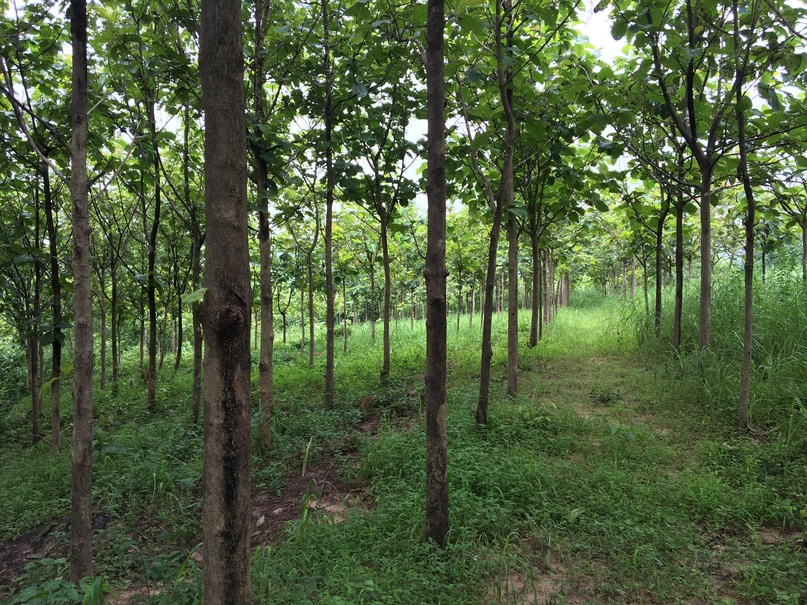Article published on site selection for teak plantations in Myanmar
24 June 2020

A commercial teak plantation in Bago Yoma, Myanmar. Photo: Yongyut Trisurat/Faculty of Forestry, Kasetsart University
The article describes the methodology used to identify suitable sites for teak plantations based on factors such as topography (slope and elevation), climate (mean annual temperature and precipitation) and soil characteristics (soil pH, soil depth and soil texture), along with geospatial analysis and a site-matching technique. The study categorized four types of site—highly suitable, moderately suitable, marginally suitable and unsuitable—and recommended further research to incorporate land quality and economic conditions into analyses.
The research is an output of an ITTO project (technically an activity in the ITTO Biennial Work Programme), Enhancing the conservation and sustainable management of teak forests and legal and sustainable wood supply chains in the Greater Mekong Subregion. The project, which involves work in five participating countries—Cambodia, the Lao People’s Democratic Republic, Myanmar, Thailand and Viet Nam—is helping to conserve natural teak forests and their gene pools; increase incomes for forest communities and smallholders; improve wood processing and marketing; and enhance regional collaboration and coordination in teak management. The project is funded by the German Federal Ministry of Food and Agriculture.
visit RESAG journal site
download the article